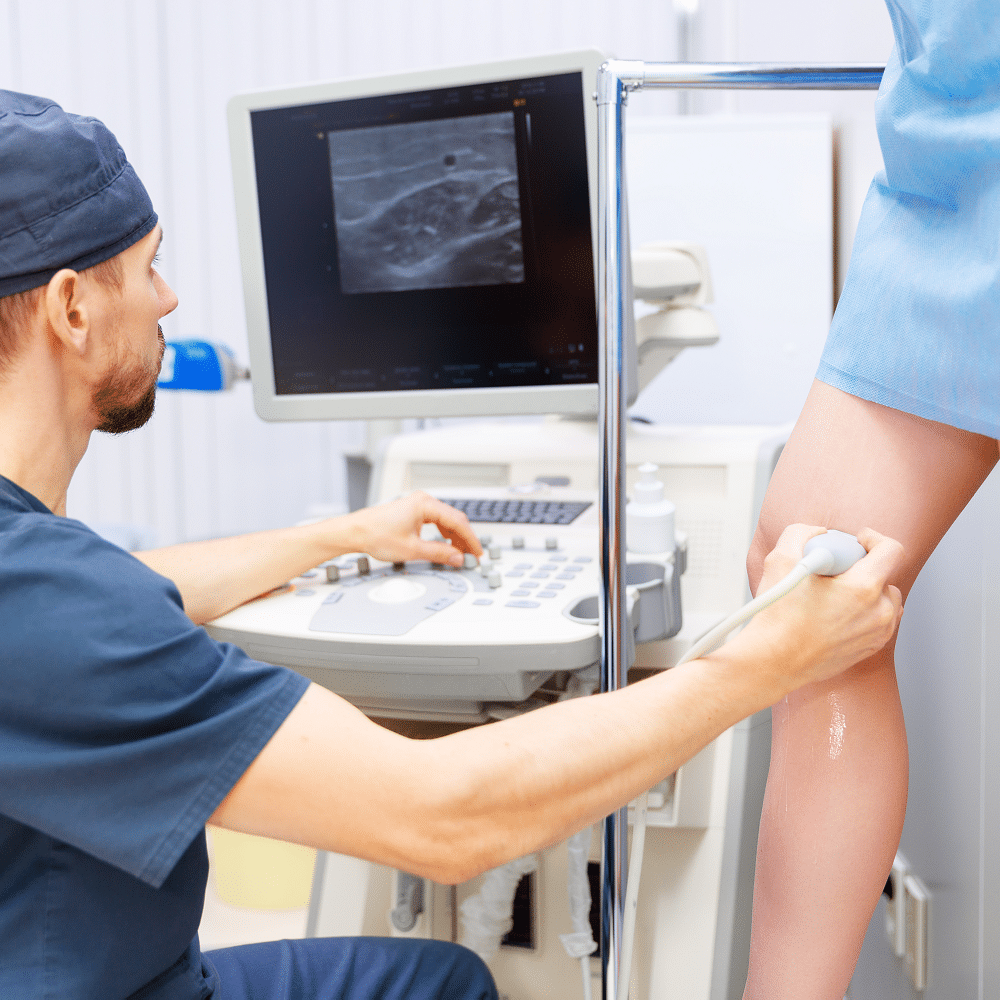Understanding Varicose Veins
Before we discuss the impact of varicose veins, let’s first understand what they are. Varicose veins(1) are twisted, swollen, and enlarged veins, usually in the legs. These veins occur when the valves inside the veins weaken or fail to function correctly. Vein dysfunction causes blood to flow backward and pool in the veins.
Risk Factors of Varicose Veins
Varicose veins can affect anyone. However, certain factors increase the likelihood of developing this condition. These risk factors(2) include:
– Age
– Gender
– Family History
– Obesity
– Sedentary Lifestyle
If you are aware of the risk factors of varicose veins, you can take steps to minimize their impact.
Symptoms of Varicose Veins
Varicose veins can manifest with a range of symptoms(3). Understanding these symptoms is essential for early diagnosis and effective management.
Visible Bulging Veins
One of the most visible symptoms of varicose veins is the appearance of twisted veins beneath the skin’s surface. These veins are often blue, purple, or dark. Their prominence can vary from person to person. While they are commonly considered a cosmetic concern, they can indicate an underlying venous issue.
The presence of visible bulging veins can affect an individual’s self-esteem, leading to depression(4). Many people seek varicose vein treatment due to the desire to improve the appearance of their legs and boost their confidence.
Aching or Throbbing Legs
Varicose veins frequently cause discomfort in the legs. Discomfort can range from mild to more pronounced throbbing pain. This discomfort is often exacerbated by prolonged periods of standing or sitting. People with varicose veins often find that their legs feel more comfortable when elevated. Also, gentle exercise that promotes blood circulation can alleviate the aching sensation.
Leg pain severity may worsen as the day progresses or during warmer weather(5) when veins tend to dilate. This pain can significantly impact your ability to carry out daily activities. Also, pain may interfere with work, exercise, and leisure pursuits.
Swelling and Itching
Swelling, medically known as edema, is another common symptom of varicose veins(6). It commonly develops in the lower legs and ankles. The swelling can make it challenging to wear specific clothing and footwear comfortably. It often worsens as the day progresses and tends to improve with leg elevation.
In addition to swelling, varicose veins can cause itching(7) in the affected areas. This itching can be persistent and bothersome. Scratching the itchy skin may lead to skin irritation or even open sores. It’s essential to resist the urge to scratch and seek appropriate treatment.
Complications Arising from Varicose Veins
Varicose veins are often considered a benign condition. However, it’s essential to be aware of the potential complications they can lead to. These complications can significantly impact your daily life and overall health.
Skin Ulcers
Chronic venous insufficiency can develop in severe cases of untreated varicose veins, leading to skin ulcers. These ulcers typically form near the ankles and are known as venous leg ulcers(8). They occur due to the long-term pooling of blood in the affected veins, which increases pressure in the lower leg. This pressure damages the skin, leading to the development of painful and often non-healing ulcers.
Venous stasis ulcers can be particularly challenging to manage and may require extended medical attention. They can significantly limit mobility and cause discomfort, affecting the ability to carry out daily activities.
Deep Vein Thrombosis (DVT)
Varicose veins can increase the risk of developing deep vein thrombosis (DVT)(9). DVT is a medical condition where blood clots form in the deep veins of the legs. If a clot breaks free and travels through the bloodstream, it can lodge in the lungs. This condition causes pulmonary embolism, which is a life-threatening condition.
Individuals with varicose veins should be aware of the signs of DVT(10), which include:
– Sudden leg pain
– Swelling
– Warmth
– Redness
If any of these symptoms occur, it is essential to seek immediate medical attention. A vein specialist can rule out DVT and prevent potentially serious complications.
Bleeding
While relatively rare, varicose veins can rupture and lead to bleeding(11). This is more likely to happen if the skin covering the veins becomes thin and fragile due to CVI. Bleeding from varicose veins can be alarming and may require immediate medical intervention.
The bleeding can be difficult to control, leading to significant blood loss. People with varicose veins must be cautious. Seek medical advice if they notice any signs of bleeding, like sudden or persistent bleeding from the affected veins.
Diagnosis and Medical Evaluation
Given the potential complications associated with varicose veins, it is crucial to seek medical guidance if you suspect you have this condition or are experiencing symptoms. Vein specialists can:
– Assess the severity of your varicose veins
– Evaluate your risk of complications
– Recommend appropriate treatment options to prevent further issues
Addressing and managing varicose veins early can minimize the risk of these complications.
Conclusion
Varicose veins are not only a cosmetic concern. They can have a substantial impact on your daily life. Understanding the symptoms, and complications is crucial for managing this condition effectively. By taking proactive steps, you can lower the impact of varicose veins and maintain a healthy life.




